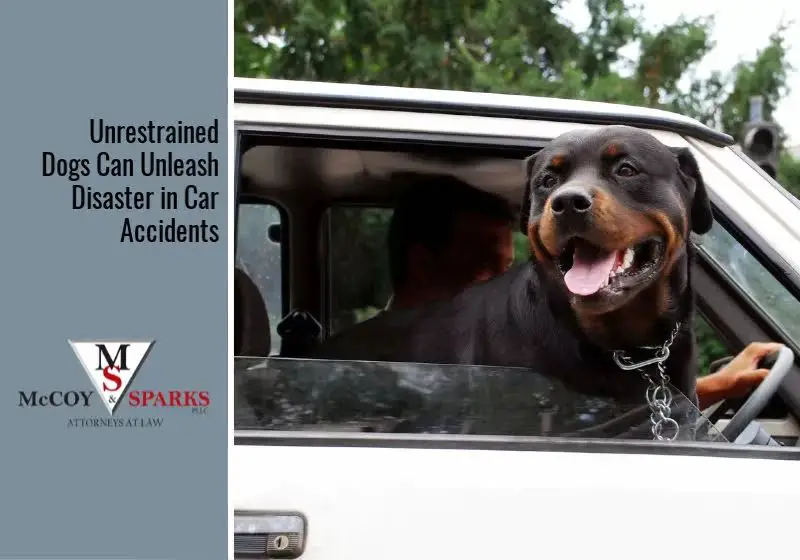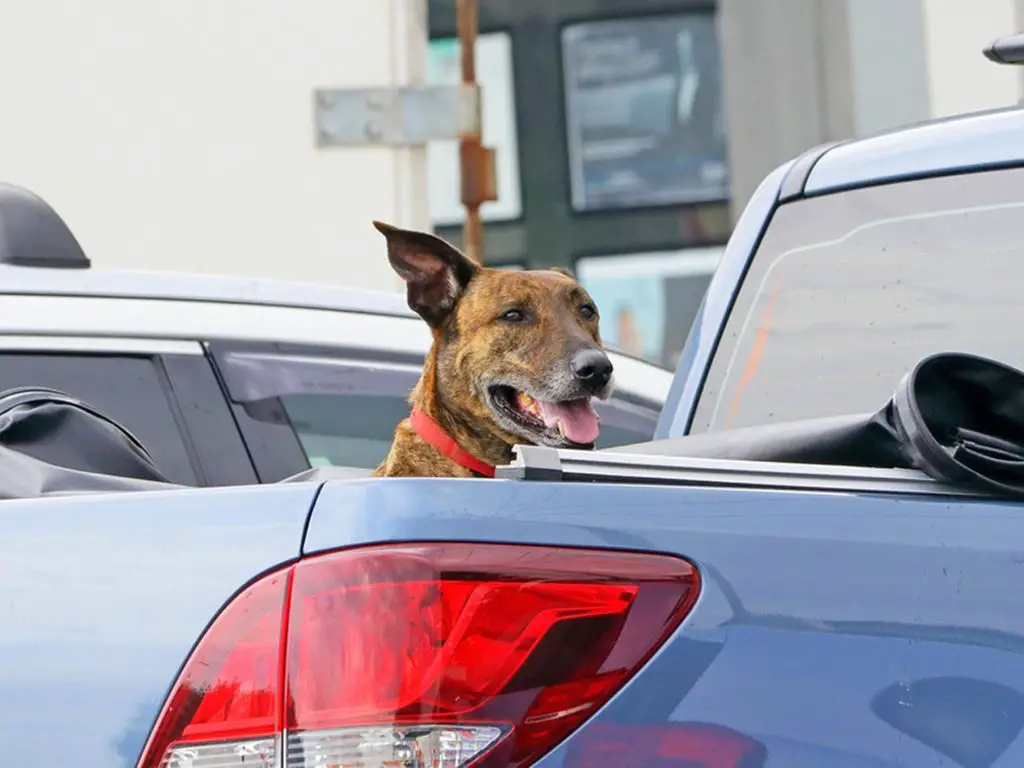Introduction
The topic of transporting dogs in the beds of trucks has long been debated. There are concerns around safety risks, but many owners still choose to transport their dogs this way out of convenience or tradition. Some key questions to explore are:
- What are the risks and dangers of allowing dogs to ride unrestrained in truck beds?
- Is it legal to transport dogs in truck beds in my state/region?
- What precautions can owners take if they choose to transport dogs this way?
- What alternatives exist for transporting dogs safely in trucks?
- Are some dog breeds better suited for riding in truck beds than others?
- Why do some owners insist on letting dogs ride in truck beds despite the risks?
This article will examine these questions to provide a comprehensive look at the topic of transporting dogs in truck beds.
Safety Concerns
Allowing a dog to ride unrestrained in the back of a pickup truck poses serious dangers and risks to the animal’s safety. According to Cesar’s Way, over 100,000 dogs are killed annually from riding unsecured in truck beds. Dogs can easily be thrown from the vehicle or jump out during sudden stops, turns, or accidents. Even at low speeds, an unrestrained dog can suffer severe injuries or death if they are ejected onto the road or collide with parts of the truck.

The ASPCA advises that an unrestrained dog in the back of a truck is in grave danger of fatal wounds, broken bones, eye injuries, or being crushed if the driver has to make a quick stop (Wide Open Spaces). Dogs have no way to brace themselves when the truck swerves or slams on the brakes. They can be severely injured by unsecured items sliding around in the truck bed. Debris and road hazards also pose major threats if the dog is not safely confined.
Allowing a dog to ride loose in a truck bed puts them at high risk of falling or being thrown out, with potentially fatal consequences. Owners should strongly reconsider this practice due to the severe dangers it presents to a dog’s safety and wellbeing.
Legality
Laws regarding transporting unrestrained pets in truck beds vary widely by state. Only a handful of states like California, Connecticut, and New Hampshire have laws that expressly prohibit dogs from riding unrestrained in the back of pickup trucks. Some other states have broader laws against cruel transportation of animals that may apply in some cases.
For example, in Texas there are no direct laws prohibiting pets in truck beds, but drivers can be charged under the state’s animal cruelty laws if something happens to the animal during transport (source). Many states have no laws at all regarding transporting pets in truck beds.
Overall, it’s important to check your local and state laws to see if unrestrained pets are allowed in truck beds. Even if legal, drivers can often be held liable if an unrestrained pet is injured or causes an accident. The safest option is to avoid transporting pets unrestrained whenever possible.

Precautions
When transporting a dog in the bed of a pickup truck, proper precautions should be taken to maximize safety and comfort. According to Outside Online, “The safest place for your dog is inside the back seat of your truck. But only if they’re securely contained in that back seat, and only if you limit your time in the car.”
If transporting in an open truck bed, experts recommend securing the dog with a canine seat belt or tether designed for truck bed use. This will prevent the dog from jumping or falling out. Provide access to water, especially on warm days, and avoid overly long trips. Take regular breaks to walk, offer water, and get the dog out of the wind. Use old blankets or a thick dog bed for comfort. Avoid high speeds and sudden stops or turns.
According to DT Boxes, “If this is your only option it is recommended you secure them gently with a seat belt and move the passenger seat back as far as possible to allow more room.” The safest solution is to get a secured crate or kennel designed to fit in the truck bed. This contains the dog safely for the entire ride.

Alternatives
While it may seem convenient, allowing your dog to ride loose in the bed of a truck is not the safest option. There are much better alternatives to keep your dog safe while still bringing them along for the ride.
One of the best options is to have your dog ride inside the truck cab. This allows you to directly supervise your dog and keeps them much safer in the event of an accident or sudden braking. To secure your dog, use a dog seatbelt harness or crate that can be belted into the truck’s seat (Shiloh’s Vet, 2020).
For pickup trucks with a topper or camper shell, you can install a secured crate or carrier in the truck bed so your dog has protection from the elements. Make sure it is firmly anchored so it does not slide around (Outside Online, 2022).
While not as safe as riding inside the cab, securing your dog in the truck bed is safer than letting them ride loose. Use a harness specially designed to restrain dogs in truck beds while allowing them some mobility.
The safest way to bring your dog in a truck is inside the cab. But with proper restraints and supervision, you can find an alternative that keeps your dog safe while still bringing them along.
Breed Considerations
When deciding what type of dog is best suited for riding in the back of a truck, it’s important to consider the breed and its characteristics. Some breeds like herding dogs may enjoy riding in the back, as they are highly energetic and stimulated by new environments. Herding breeds such as border collies, Australian shepherds, and cattle dogs often thrive on truck rides, getting to watch the world go by while taking in new smells and sounds (Source).
However, other breeds may become overstimulated or anxious in the bed of a moving truck. Breeds that are sensitive to sound, motion, or unfamiliar surroundings may find it stressful. For example, breeds that are naturally wary like chihuahuas may become frightened by riding in a truck bed. It’s best to stick to breeds that are social, confident, and adaptable like labs, retrievers, poodles, and bulldogs (Source).
Additionally, brachycephalic (short-nosed) breeds like pugs, bulldogs, and boxers are not well-suited for riding in open truck beds due to their breathing challenges. And extremely small breeds should also be avoided for safety reasons. Ultimately, it’s wise to select an energetic, people-oriented breed with an adaptable temperament best suited for the trucking lifestyle.
Owner Mindset
Many owners who allow their dogs to ride in truck beds do so out of convenience and habit, without fully considering the safety risks. Some assume their dogs enjoy feeling the wind and smells, or want their pets readily accessible during trips to places like the park or lake. The open truck bed provides easy access compared to getting in and out of the cab. They may believe their dogs are safe enough if tethered or in a secured crate or carrier. However, according to the experts at Shiloh Veterinary Hospital, “Allowing your dog to ride in the back of a pickup truck shows very poor judgment and a general disregard for his safety.” (source)
While owners may have fond memories of enjoying rides in truck beds themselves or see it as a normal practice in certain areas, the convenience simply does not outweigh the potential dangers. Securing dogs in the cab or a secured crate/carrier in the bed are far safer options. As Quora user Jack Mathews suggests, “The choice is simple. If you care about your pet, you will want him safe.” (source)
Expert Opinions

Veterinarians and animal welfare organizations strongly advise against allowing dogs to ride in truck beds, even if they are secured in a crate or with a tether. According to the AVMA, “Allowing dogs to ride in the back of trucks puts them at risk for injury and illness” (https://www.avma.org/resources-tools/literature-reviews/dogs-traveling-truck-beds).
The Humane Society states that an estimated 100,000 dogs die each year in the U.S. after falling or jumping from truck beds, and dogs left unrestrained in truck beds are at even greater risk (https://www.tripswithpets.com/twp-blog/the-dangers-of-dogs-riding-in-pickup-truck-beds). They strongly recommend against the practice.
Veterinarian Dr. Lisa Edquist says, “Dogs should always be safely secured when traveling. Allowing them to ride loose in the back of a pickup truck risks injury and possibly death if they jump or fall out” (https://www.leonvalleyvet.com/blog/the-dangers-of-letting-your-dog-ride-in-the-truck-bed-2/).
Conclusions
In conclusion, while driving with dogs unrestrained in truck beds is in most cases legal, it poses various safety risks that owners should strongly consider. Unrestrained dogs can easily fall or jump from vehicles and get injured or lost, and are also at risk of being hit by flying debris. Securing dogs with crates or tethers is the safest option, along with using secured dog beds or caps over the truck bed. However, the safest recommendation is to avoid having unrestrained dogs in truck beds altogether and place them in the cab instead. Owners should weigh the convenience against risks before making a decision. While some dogs may enjoy riding in truck beds, they are dependent on owners to act responsibly and prioritize their wellbeing. With proper precautions and good judgment, truck bed injuries and tragedies can be avoided.
Further Resources
For dog owners looking for more information on safely transporting pets in vehicles, here are some additional resources:
- American Kennel Club – How To Travel With Dogs in Pickup Trucks: Safety Tips
- American Veterinary Medical Association – Traveling With Your Pet FAQ
- Humane Society of the United States – Traveling by Car With Your Pet
- Certapet – The Laws on Driving With Dogs in the Bed of Your Truck
- The Drive – Is It Safe to Drive With a Dog in the Bed of a Truck?
These resources from reputable organizations provide additional tips, information on laws, safety gear, travel prep, securing pets, and more to help owners make informed decisions about carrying pets in truck beds.